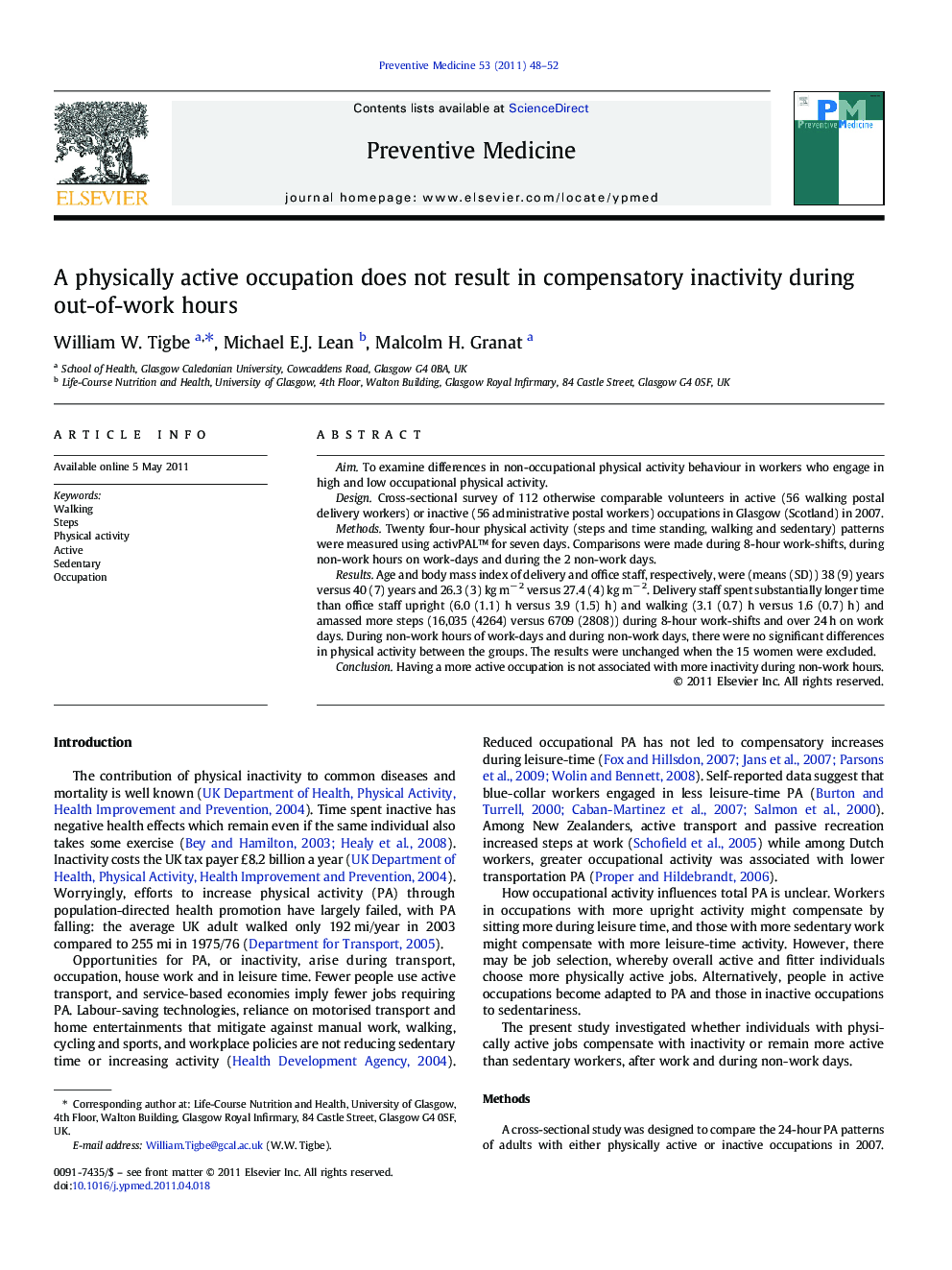| Article ID | Journal | Published Year | Pages | File Type |
|---|---|---|---|---|
| 3100831 | Preventive Medicine | 2011 | 5 Pages |
AimTo examine differences in non-occupational physical activity behaviour in workers who engage in high and low occupational physical activity.DesignCross-sectional survey of 112 otherwise comparable volunteers in active (56 walking postal delivery workers) or inactive (56 administrative postal workers) occupations in Glasgow (Scotland) in 2007.MethodsTwenty four-hour physical activity (steps and time standing, walking and sedentary) patterns were measured using activPAL™ for seven days. Comparisons were made during 8-hour work-shifts, during non-work hours on work-days and during the 2 non-work days.ResultsAge and body mass index of delivery and office staff, respectively, were (means (SD)) 38 (9) years versus 40 (7) years and 26.3 (3) kg m− 2 versus 27.4 (4) kg m− 2. Delivery staff spent substantially longer time than office staff upright (6.0 (1.1) h versus 3.9 (1.5) h) and walking (3.1 (0.7) h versus 1.6 (0.7) h) and amassed more steps (16,035 (4264) versus 6709 (2808)) during 8-hour work-shifts and over 24 h on work days. During non-work hours of work-days and during non-work days, there were no significant differences in physical activity between the groups. The results were unchanged when the 15 women were excluded.ConclusionHaving a more active occupation is not associated with more inactivity during non-work hours.
► We examine association between occupational and non-occupational physical activity. ► Workers who engage in high and low occupational physical activity were compared. ► We found that the physically active workers were more active only during work. ► The active occupation group did not engage in more inactivity during non-work hours. ► There is no greater compensatory inactivity with a more active occupation.
